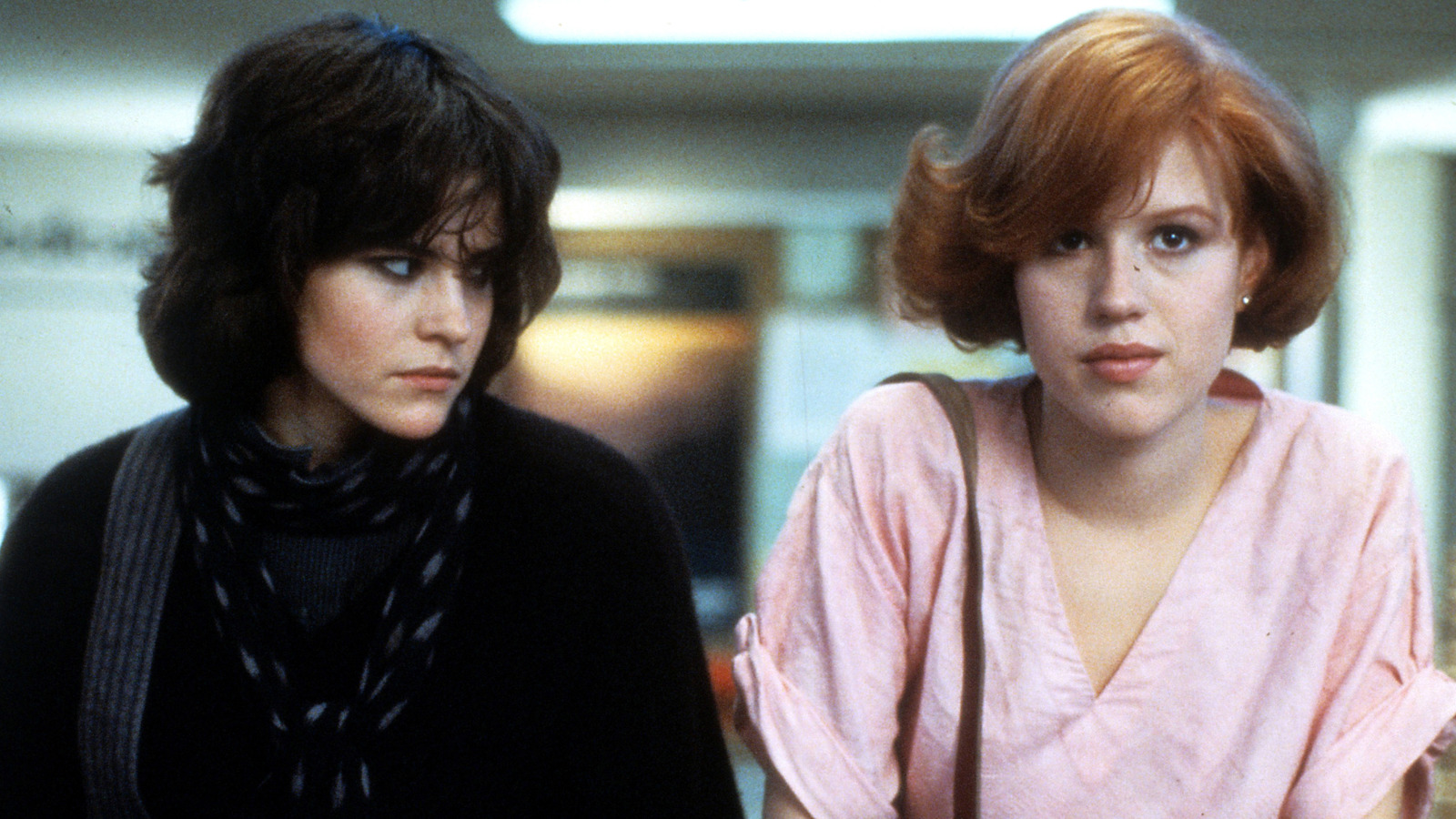
Prior to the debut of “Iron Man,” which kick-started the Marvel Cinematic Universe, cross-references between films not directly linked were scarce, even if they stemmed from the same creator. While the Universal Monsters had their own niche in horror cinema, that was essentially it. Since 2008, numerous efforts have been made to replicate Marvel’s success, but most of these planned cinematic universes fell flat. However, this doesn’t mean that there aren’t other film franchises and movies that interconnect or even share a universe, often without the general public realizing it.
Frequently, such connections begin as subtle references like the appearance of a Xenomorph skull in the closing scene of “Predator 2” from 1990, which later led to comic book collaborations and ultimately the release of the film “Alien vs Predator” in 2004. However, these lesser-known ties are often overlooked, either because they go unnoticed or due to viewers not fully understanding the impact on the canon.
In simpler terms, a connected universe refers to a collection of stories or films where characters, settings, or events from different productions intersect, either subtly or overtly. However, it’s important to note that we exclude instances like “National Lampoon’s Loaded Weapon 1,” where appearances are merely for humor and not part of a genuine shared universe. Instead, we focus on instances where the creators, writers, directors, or actors have explicitly approved these connections, even if studio rights complicate things. Here are some movies you might not realize were set in the same connected universe.
Blade Runner and Soldier
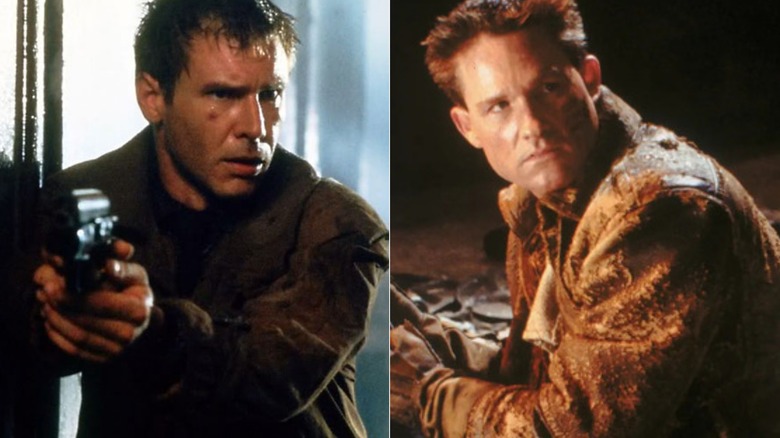
It’s quite logical that films written by the same screenwriter could belong to the same fictional universe, regardless of whether one is an original production or an adaptation of a classic sci-fi tale. This scenario applies to “Blade Runner” and “Soldier”, which share a common universe – a connection often overlooked by viewers.
1982’s sci-fi classic “Blade Runner” was inspired by Philip K. Dick’s novel “Do Androids Dream of Electric Sheep?” and is often hailed as one of the greatest sci-fi films. The story takes place in a dismal future where sophisticated robots, or replicants, live among humans. At the end of the movie, a replicant named Roy Batty (played by Rutger Hauer) delivers an emotional speech, mentioning distant locations such as Tannhäuser Gate and the Shoulder of Orion in outer space.
1998 finds us delving into Kurt Russell’s sci-fi action movie, “Soldier.” The screenplay was penned by David Webb Peoples, who also contributed to the script for “Blade Runner.” In this movie, Russell plays Sgt. Todd 3465, a soldier bred and raised by the military. Parallels with Batty are drawn as we discover that he fought in battles at Tannhäuser Gate and the Shoulder of Orion. Interestingly, a “spinner” car from “Blade Runner” makes an appearance in one scene, hinting at “Soldier” being set within the same universe as the latter film.
Jackie Brown and Out of Sight
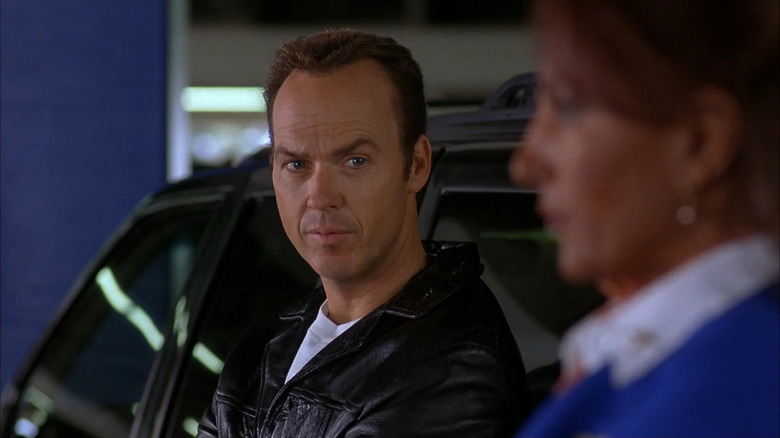
In the cinematic world, “Jackie Brown,” a film both written and directed by the renowned filmmaker Quentin Tarantino, marked the director’s first project following the extraordinary success of “Pulp Fiction.” Interestingly, this production stands alone in Tarantino’s oeuvre as it was adapted from another creator’s work. The source material was Elmore Leonard’s novel “Rum Punch,” and due to Tarantino’s affection for blaxploitation, it features ’70s icon Pam Grier in the leading role. This clever blend of crime, caper, and comedy is often hailed as one of Tarantino’s finest works, despite not being among his highest-grossing films.
Out of Sight,” released a year subsequent to “Jackie Brown,” was the work of director Steven Soderbergh. In this film, George Clooney portrays a bank robber pursued by a female bounty hunter (Jennifer Lopez). Despite not being a box office sensation, it did manage to spawn a TV series titled “Karen Sisco,” with Carla Gugino in the lead role. However, due to less widespread viewings and recollections of “Out of Sight” compared to “Jackie Brown,” many viewers often overlook that two characters from Quentin Tarantino’s movie had minor appearances: Samuel L. Jackson and Michael Keaton, who make cameos in the film. This can be explained since “Out of Sight” is also adapted from a novel by Elmore Leonard.
In 2012, Karen Sisco was featured in a guest appearance on FX’s “Justified,” with Mary McDonnell replaying her character from another Elmore Leonard TV series.
Spy Kids and Machete
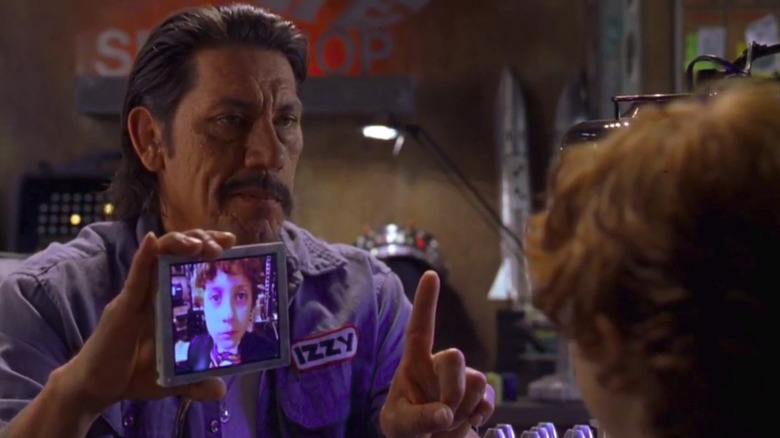
When pondering shared cinematic universes (either official or unconventional), people typically envision films with many similarities, and that’s accurate for most of the titles on this list. “Blade Runner” and “Soldier” are both futuristic sci-fi movies, while “Jackie Brown” and “Out of Sight” are crime comedies. However, it’s hard to imagine two films more dissimilar than “Spy Kids” and “Machete,” but astonishingly, these films do share the same universe, and this isn’t just a fan speculation.
2001’s “Spy Kids” was an action-comedy designed for the little ones, where I found myself in a thrilling tale about two siblings who unbelievably learn that their parents, played by Carla Gugino and Antonio Banderas, are world-class spies. However, things take a turn when these parents get kidnapped by an evil genius. With no choice left, the kids leap into the world of espionage to save the day. Now, you may be scratching your head about what on earth this has in common with the ultra-violent, R-rated flick “Machete.” But once you grasp that both movies were directed by Robert Rodriguez, it all becomes crystal clear!
2010 saw the release of the film “Machete,” starring Danny Trejo as Machete, a former Mexican Federale who embarks on a violent quest for vengeance. Interestingly, his initial on-screen debut was in “Spy Kids,” where he played the kids’ uncle, aiding them on their perilous mission. Additionally, Machete made an appearance in a Snickers commercial that included the Brady Bunch, implying that this TV show is part of Machete’s universe as well. It’s not unfounded for Trejo to claim that Machete is as culturally significant as Superman.
Trading Places and Coming to America
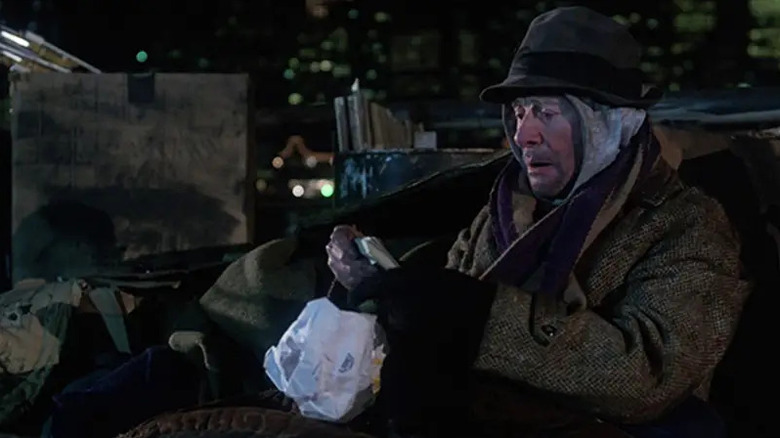
Film creators seldom ponder the significant connections of a cameo appearance since it often serves as mere humor. This was likely the case in 1988 when such an event transpired within Eddie Murphy’s comedy, “Coming to America.” Here, Murphy assumed the role of African prince Akeem Joffer, who embarked on a journey to America to discover a suitable partner.
In America, Joffer pretends to be a common man to win over a woman named Lisa (Shari Headley). However, his assistant Semmi (Arsenio Hall) decorates his apartment extravagantly against Joffer’s wishes, leaving him displeased. As a result, he gives away all their money to two homeless men unaware that they are Mortimer Duke and Randolph, characters played by Don Ameche and Ralph Bellamy from Eddie Murphy’s previous film “Trading Places.” These two had ended up as penniless in the earlier movie. Their reappearance in “Coming 2 America” hinted at more than just a single humorous reference.
In some cases, people might brush off these films as they feature Eddie Murphy as the lead character in both, seemingly ruling out the possibility of them sharing the same universe. However, it’s important to recall that Murphy portrays several roles within “Coming to America,” including Joffer, a barbershop owner, and Randy Watson, the lead singer of Sexual Chocolate, one of the most renowned fictional music groups in television and film history. Moreover, Craig Brewer, director of “Coming 2 America,” suggests there’s still room for a crossover movie.
Django Unchained and Shaft
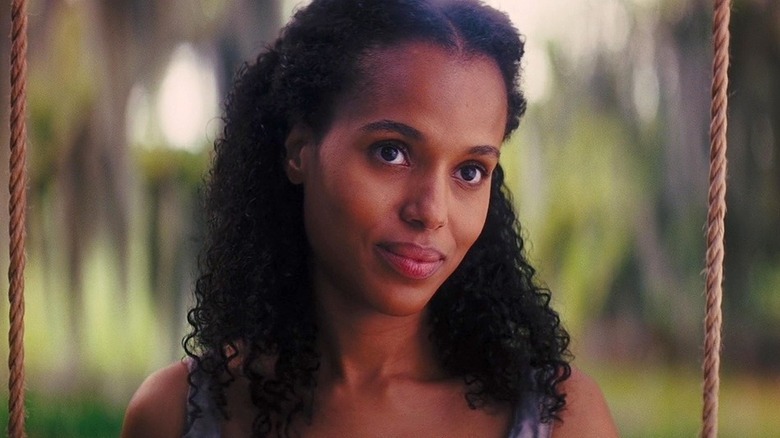
You might find it puzzling how a film set in the Wild West after the American Civil War, like “Django Unchained”, and another movie about a private detective solving crimes in contemporary 1970s New York City, such as “Shaft”, have any connection. However, if I tell you that they don’t share any common elements, such as the same writer, director, or actor, it may leave you scratching your head and asking yourself what we mean when we claim that these two movies belong in the same fictional universe.
In his 2012 movie “Django Unchained,” Quentin Tarantino, known for his fondness of blaxploitation films, cleverly connected his work to one of the genre’s classics. The film introduces us to Django, a freed slave played by Jamie Foxx, who embarks on a mission to rescue his wife from her oppressors. This wife is Broomhilda, portrayed by Kerry Washington. Although “Django Unchained” doesn’t explicitly link the character to the “Shaft” series for apparent reasons (as it’s set a century apart), the connection becomes evident when you discover that Broomhilda’s full name is Broomhilda von Shaft.
It was later confirmed by Quentin Tarantino himself that the character Django is actually a relative of John Shaft, as portrayed by Richard Roundtree. Interestingly, this ties in with Samuel L. Jackson’s role in the character – Jackson played John Shaft (the original’s nephew) in two sequels set in the 21st century.
American Psycho and Rules of Attraction (and maybe Less Than Zero)
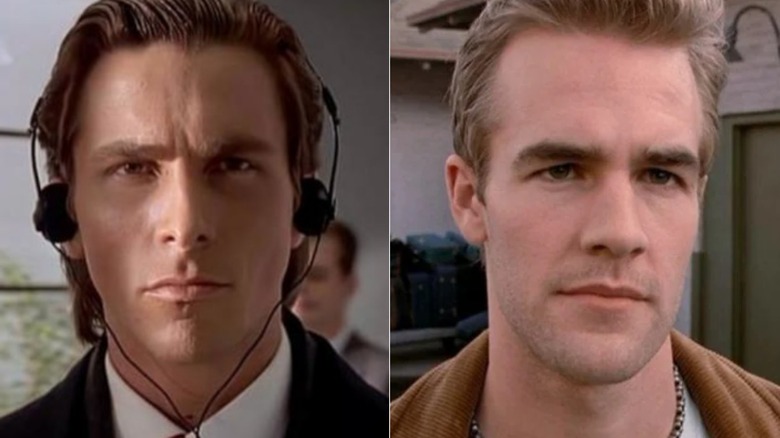
2000’s “American Psycho,” often hailed for its exploration of harmful masculinity, is a contentious film adaptation from Bret Easton Ellis’ once-banned book. Over time, it has emerged as a significant cultural artifact of the millennium, boosting the fame of Christian Bale in Hollywood. In this movie, Bale portrays Patrick Bateman, a Wall Street banker who is fixated on wealth, power, and self-image. However, beneath his business dealings during the day, Bateman secretly operates as a ruthless serial killer with a penchant for violence.
Instead of contrasting, let’s discuss the dark comedy titled “Rules of Attraction,” which features James Van Der Beek, well-known from “Dawson’s Creek,” as a drug dealer entangled in an odd love triangle. However, when you discover that his character is named Sean Bateman, it becomes clearer: The two main characters are brothers, as the movie is adapted from Bret Easton Ellis’ book of the same name. Interestingly, there’s an omitted scene in “Rules” where Sean Bateman contacts his older brother Patrick for funds – however, in this adaptation, Patrick is portrayed by Casper Van Dien instead of Bale.
It’s worth noting that another book by Bret Easton Ellis, titled “Less Than Zero,” is set within the same fictional world as well. However, in contrast to the novel, the 1987 film adaptation, featuring Andrew McCarthy and Robert Downey Jr., does not include the connections that are present in the original book.
Ghostbusters and Casper
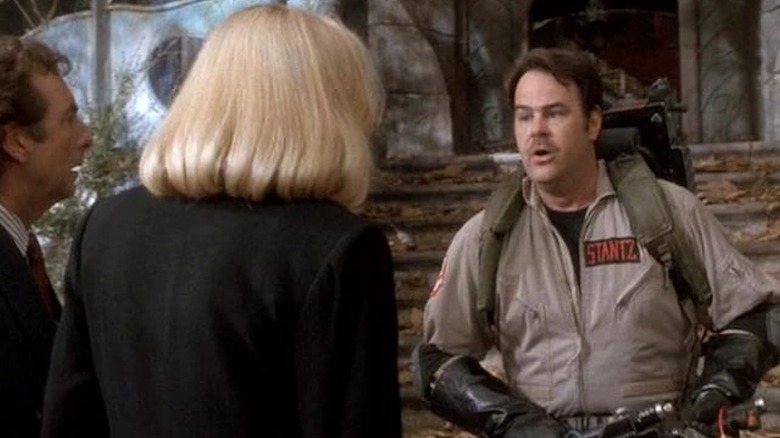
1990s saw a surge in movie adaptations of classic comic books, possibly fueled by the phenomenal success of Tim Burton’s 1989 film “Batman”. It wasn’t just superheroes that made it to the big screen; titles like “Richie Rich” from Harvey Comics also became full-length movies. Another beloved character from Harvey, Casper the Friendly Ghost, also graced the silver screen in 1995. Today, this movie is not as well-known, but it features Christina Ricci as Kat, a solitary teenage girl who becomes friends with Casper, a ghost of a boy who had passed away years ago. Casper’s ghost, along with that of his two uncles, resides in a grand mansion owned by a materialistic socialite, Catherine Crittenden (Cathy Moriarty), who aims to evict them.
Although “Casper” may not be remembered as a timeless classic, it was a blockbuster movie that raked in almost $300 million at the box office. However, what might slip people’s minds is that one specific scene places it within the same universe as another renowned ghost-focused comedy. The scene in question occurs when Cathy employs several paranormal investigators to eliminate the ghosts from her house, each one proving unsuccessful. One of these specialists is Ray Stantz, an exceptional Ghostbuster, portrayed by Dan Aykroyd (and sporting a mustache this time). Thus, it’s plausible that “Casper” could be part of the “Ghostbusters” lore – we believe so.
Transformers and 2009’s Friday the 13th
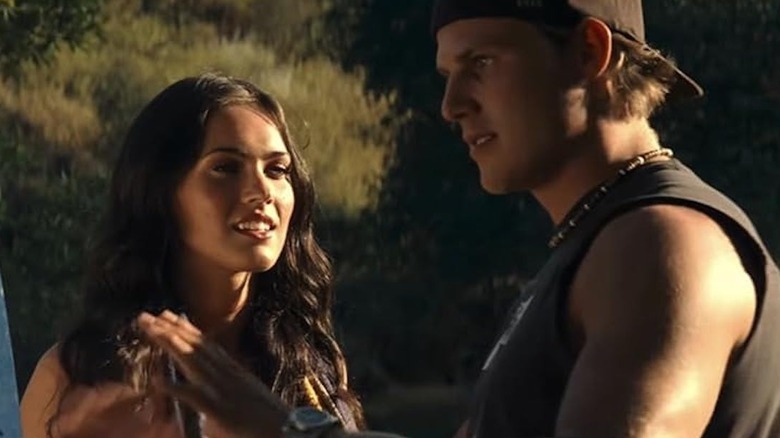
It’s surprising to many that a high-octane, science fiction action movie like Transformers might share similarities with a gruesome reboot of the Friday the 13th horror series. However, if you look closely, there are hints that these two genres aren’t as distinct as they seem. This is due to the fact that Michael Bay, the director known for his explosive filmmaking style, was a producer on the 2009 remake of Friday the 13th.
As a devoted fan, I can’t help but share my excitement about the recent reboot featuring Jared Padalecki, Danielle Panabaker, Aaron Yoo, and Amanda Righetti. This thrilling production offers a fresh take on the legendary tale of Jason Voorhees, a chilling figure known for his hockey mask and brutal machete attacks. But what’s the connection between this chilling story and an expansive franchise centered around colossal robots from outer space engaged in a long-standing war on our planet? The secret lies in the captivating presence of actor Travis Van Winkle, who brings his character to life in both movies, although many may not have noticed this intriguing overlap.
In the 2007 movie “Transformers,” Anthony Anderson portrays the arrogant character Trent, who is romantically involved with Mikaela, played by Megan Fox at the start of the film. However, their relationship doesn’t last long. Interestingly, Anderson reappears in the 2009 film “Friday the 13th,” where he once again plays an arrogant jock, this time caught cheating on his partner. Due to the complex rights issues surrounding the “Friday the 13th” series, it’s unlikely that Trent’s character from one franchise will ever intersect with the other.
The John Hughes universe
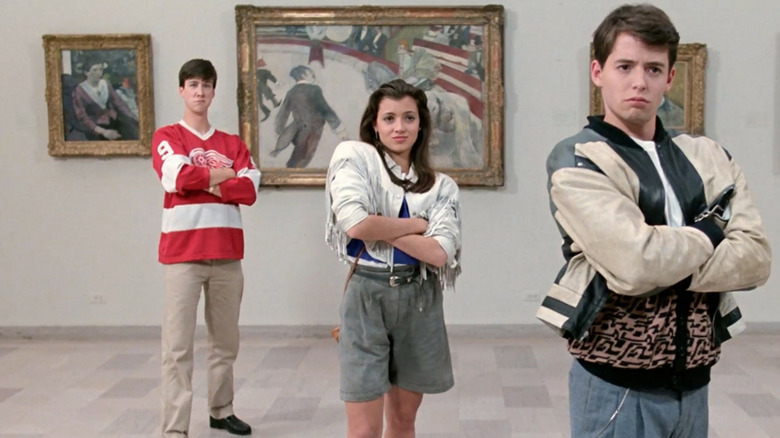
John Hughes, the film director, created numerous memorable ’80s teen comedies such as “Pretty in Pink,” “Sixteen Candles,” and “Weird Science.” He also produced family favorites like “Home Alone,” “Planes, Trains, and Automobiles,” and “Uncle Buck.” However, it’s not widely known that many of Hughes’ films are set in the same fictional town of Shermer, Illinois, with some even taking place at the same school, Shermer High.
Shermer High School, mentioned by name in “Weird Science,” “The Breakfast Club,” and “Ferris Bueller’s Day Off,” serves as the backdrop for nearly every movie directed by John Hughes. This isn’t just a fan theory – the director himself has confirmed that most of his films actually take place within the same fictional universe.
Years after starting his movie career, Hughes shared that he initially envisioned a town as the setting for all his films. He explained that this town, based on Shermer, Illinois, was populated by characters who were often neighbors. For instance, the character Del Griffith from ‘Planes, Trains & Automobiles’ lived just two doors away from John Bender (from ‘The Breakfast Club’). Ferris Bueller, another character, knew Samantha Baker from ‘Sixteen Candles’. Over a span of fifteen years, Hughes wrote stories set in this town, chronicling its history.
Get Out and Being John Malkovich
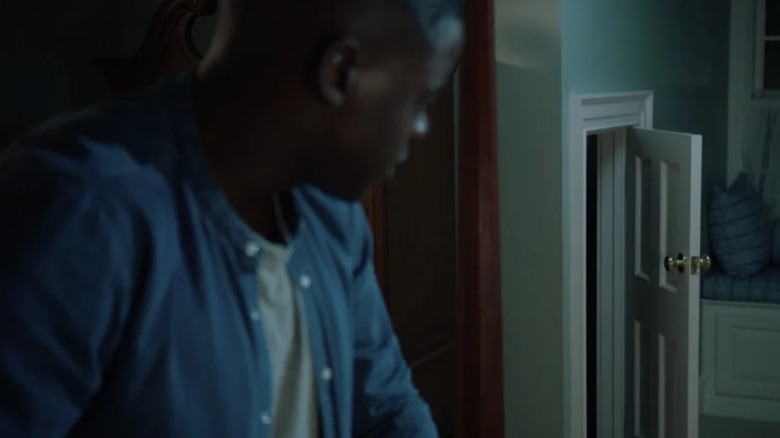
Around the mid-1990s, newcomer Charlie Kaufman penned a slightly surreal comedy-drama about individuals inhabiting another man’s consciousness. This unique piece eventually fell into the hands of an equally untested filmmaker — Spike Jonze, making his directorial debut — leading to the creation of “Being John Malkovich,” one of the most eccentric, daring, and bold studio films produced in the 20th century. In this film, actor John Malkovich, who portrays himself, is connected to a doorway found in an old apartment building. People can walk through this doorway and temporarily take control over his body.
Approximately two decades later, comedian Jordan Peele stepped into directing with his first film, “Get Out,” which was a chilling psychological horror movie that unfolded as a young man unveiled an eerie family’s plan to swap their consciousnesses with those of different Black individuals they enticed to their estate. Immediately, it becomes apparent how audiences could weave these two narratives together in a creative fan interpretation. What makes this connection even more compelling is the presence of Catherine Keener in both films.
Get Out” can be seen as a sequel to “Being John Malkovich.
Chopping Mall and Eating Raoul
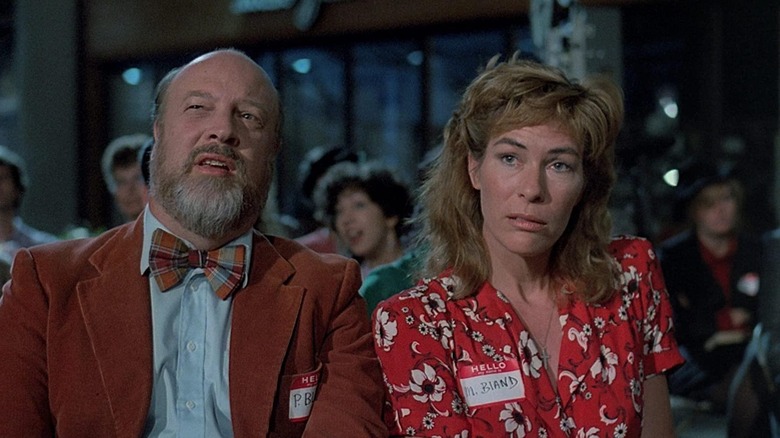
If you’re unfamiliar with these movies, you’re in for an educational dive into film history. They are B-movies and indie classics, with “Chopping Mall” being a beloved pick among ’80s cult horror enthusiasts. Made in 1986, this movie features a group of rebellious, sexually active teens who decide to party at a mall after hours. However, they discover that the mall is protected by a malfunctioning security system consisting of three rogue killer robots. Over time, these robots begin picking off the teens one by one.
1982’s “Eating Raoul” is an independent black comedy, starring Ed Begley Jr., Buck Henry, and Robert Beltran who would later become known for “Star Trek: Voyager.” However, it’s Paul Bartel and Mary Woronov who truly shine in their roles as a more traditional, older couple. In this film, they resort to the swingers scene to finance their new business venture, which involves robbing and murdering wealthy participants of elaborate sex games.
Although these two movies share little similarities in their plotlines, they both possess a bleakly humorous tone. However, there’s more than just their humor that links them. In the opening scene of “Chopping Mall,” characters played by Bartel and Woronov make an unexpected appearance as their “Eating Raoul” personas. This cameo might have gone unnoticed by many viewers, and it becomes even more puzzling when Paul and Mary find themselves in the spotlight during a scene where they discuss the peculiar robots with each other. This scene feels like a dark inside joke.
Super and Brightburn
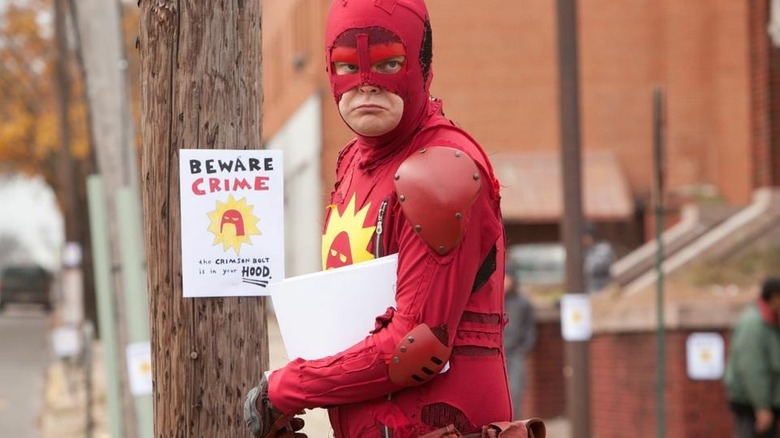
In his second attempt as a director, James Gunn created the 2010 movie “Super,” a darkly funny blend of superhero and comedy genres. The film centers around an ordinary man, played by Rainn Wilson, who undergoes a religious transformation and decides to combat crime on the streets, donning the costume of the Crimson Bolt. Although it didn’t achieve blockbuster status, “Super” was still groundbreaking in Gunn’s signature style and helped establish him as a highly sought-after talent, ultimately paving the way for movies like “Guardians of the Galaxy” and the new DC Universe.
In 2017, Gunn created another superhero film titled “Brightburn,” which was less humorous and significantly darker in tone. Unlike the traditional heroic narrative, this movie depicted a young extraterrestrial boy gifted with extraordinary powers who chose not to use them for good. It offered a sinister interpretation of the Superman legend, several years before Gunn was commissioned to pen and direct “Superman” for DC. Interestingly, “Brightburn” also established its own cinematic universe, sharing connections with the movie “Super.
The connection occurs at the end of the credits, showcasing news about various superpowered events happening worldwide. One story talks about a sea monster and another hints at a super-powered witch, while there’s also a glimpse of Rainn Wilson’s character from “Super,” the Crimson Bolt. This could be seen as simple world-building or even an Easter egg, but it opens up several intriguing scenarios if we consider the possibility of a “Brightburn” sequel (though Gunn has suggested it might never materialize).
28 Days and Transformers: Dark of the Moon
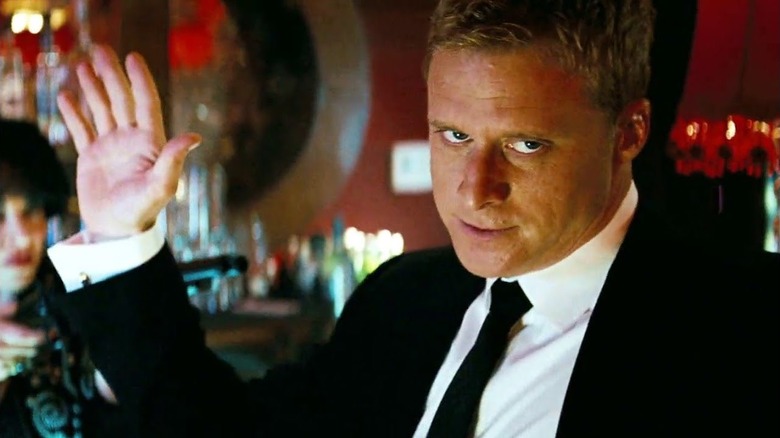
There’s an often overlooked link between the first “Transformers” movie and its universe, apart from “G.I. Joe.” The connection we’re referring to isn’t immediately apparent, as it involves the 2000 romantic comedy “28 Days,” starring Sandra Bullock. This film might seem an unusual candidate for sharing a cinematic universe with “Transformers,” given that it was released seven years before the live-action Transformers made their debut.
In the film, Sandra Bullock portrays an alcoholic who undergoes 28 days in rehab. During her stay, she encounters a diverse group of addicts, including Alan Tudyk’s character named Dutch Gerhardt. Interestingly, this character resurfaces over a decade later in “Transformers: Dark of the Moon,” as revealed by the actor himself.
In 2014, Tudyk told AV Club, “He’s the exact same person. Not only does he bear a resemblance – it’s the identical individual.” He altered his name, went through rehabilitation, joined the military, crossed paths with Agent Simmons, turned into a contract killer, overthrew governments in third-world countries, and then grew weary and decided to focus his life on assisting Agent Simmons, portrayed by John Turturro.
Better Luck Tomorrow and The Fast and the Furious
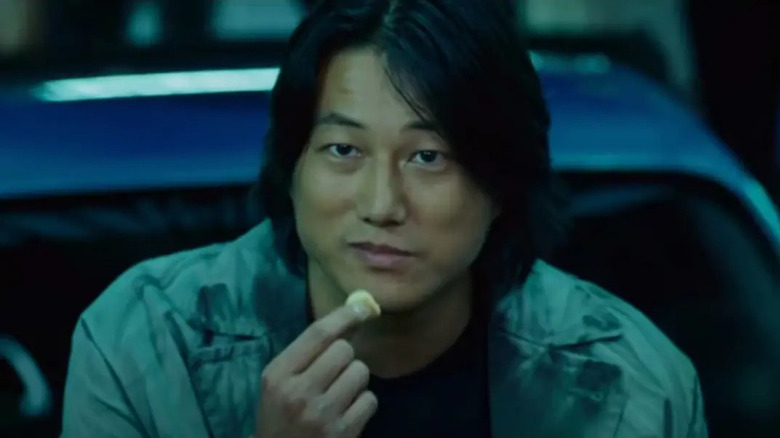
In 2006, Universal Pictures decided to create a spin-off titled “The Fast and the Furious: Tokyo Drift,” which was directed by Justin Lin. This film, set in Japan, introduced actor Sung Kang as Han Lue, an old acquaintance of Dominic Toretto. Sharp-eyed viewers, however, picked up on something that many of us didn’t notice initially: Han wasn’t a fresh character; he was actually from a completely different movie that had no connection to the series previously.
In 2002, Justin Lin first directed a movie solo titled “Better Luck Tomorrow.” This film tells the story of a gang of Asian-American youths who resort to criminal activities due to their dissatisfaction with their ordinary lives in Los Angeles. Currently, you can watch Sung Kang playing Han Lue, along with Parry Shen, Jason Tobin, and John Cho in this movie.
Years down the line, when they asked me, Lin, to helm the “Fast and Furious” spin-off, I couldn’t resist inviting Sung Kang and his beloved character, Han, along for the ride. Fans have grown so attached to Han that even his death in “Tokyo Drift” wasn’t enough to keep him off the screen forever! In a twist of events, the storyline was reworked to place Han’s adventures after those of other films in the series, paving the way for Kang’s return – something he graciously did no less than four times before shocking us all with the revelation in “F9” that our beloved Han wasn’t actually gone at all.
Death Race and Alien
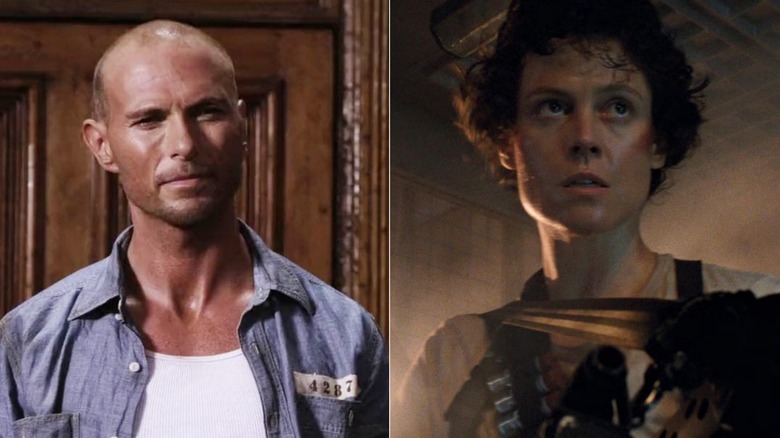
As a hardcore gamer, I can’t help but geek out over the epic crossover between the “Alien” and “Predator” franchises. These iconic series have left their mark on cinema, and they’re often linked through the mysterious Weyland-Yutani Corporation. This colossal conglomerate, rumored to be older than time itself, has been funding the Xenomorph research that forms the basis of the “Alien” saga. And guess what? They even get a shoutout in the 2025 movie “Predator: Badlands.
The same reference can be discovered in an unexpected location: The 2010 action film “Death Race 2” (a prequel to the 2000’s “Death Race”), starring Luke Goss. This movie series is set in a bleak, near-future society where all prisons are privately owned and prisoners are compelled to compete in lethal races for public entertainment. In “Death Race 2”, we uncover that the Terminal Island Penitentiary, which serves as the main setting for the films, is financed and controlled by — you’ve got it right — the Weyland Corporation.
Although it appears unlikely these two film series will share a screen with a crossover, such as Goss’ Death Race character fighting an Xenomorph, it’s not entirely out of the question. Director Paul W.S. Anderson, who has worked on both franchises, seems to suggest that the two story worlds are connected in his mind, implying a possible connection between the universes.
Collateral and The Transporter
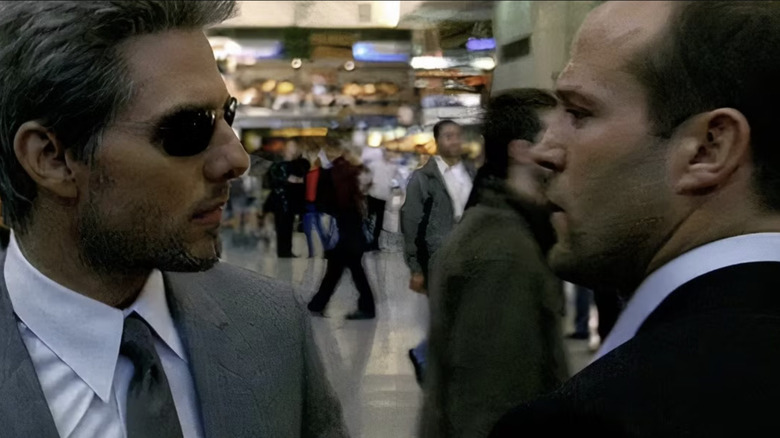
There’s a striking similarity between the films “Collateral” and “The Transporter”: Both are pulse-pounding action thrillers, both boast a charismatic action hero in the lead role, and both center around a complex anti-hero who works as a criminal-for-hire. Interestingly, these movies share some heavyweight talent behind the scenes; Luc Besson, director of “La Femme Nikita”, scripted “The Transporter”, while Michael Mann, director of “Heat”, helmed “Collateral” in 2004. Although it might not be immediately apparent to many viewers, their shared universe seems quite plausible once you consider the connection.
In the film “Collateral,” Tom Cruise plays the character Vincent, a covert assassin who enlists an unwitting taxi driver into his current assignment. Previously, in “The Transporter” (and its sequels), Jason Statham embodied Frank, a lone operative specializing in transporting high-value goods for crime syndicates. Despite the fact that “Collateral” is set in Los Angeles and “The Transporter” occurs in France (director Luc Besson’s homeland), these characters eventually cross paths in a crucial scene in “Collateral,” as an unidentified courier, played by Statham, delivers a mysterious item to Cruise’s character Vincent.
As a gamer, I initially thought Statham’s role in a movie was just a random coincidence since it wasn’t credited. But then, the director of “Transporter,” Letterier, revealed that it was actually the same character! He even hinted at the possibility of Frank making an appearance in more movies from Michael Mann.
Commando and Die Hard 2 (and Predator)
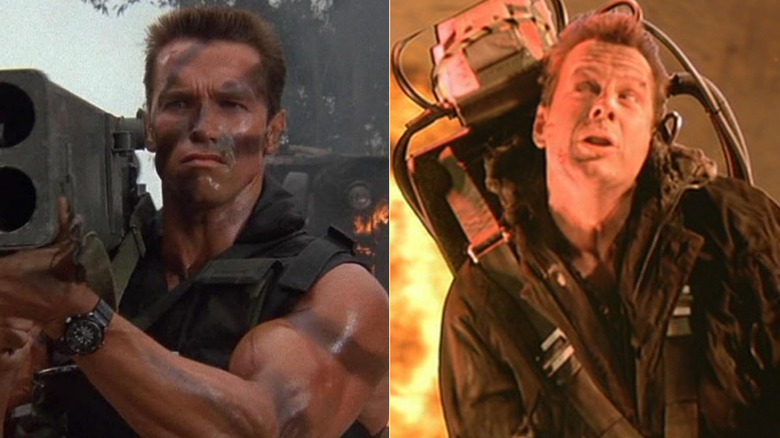
Movies can connect through shared universes using various techniques such as on-screen cameos, casual references to characters from another series, or subtle details that link them. For instance, the films “Commando” and “Die Hard” are linked by a common setting: the fictional Latin American nation of Val Verde. In the 1985 film “Commando”, Val Verde is where John Matrix’s (Arnold Schwarzenegger) next assignment takes place, as he is hired by its tyrannical leader Arius to eliminate his adversaries. However, Matrix never reaches Val Verde in the movie, as he instead chooses to betray Arius and embark on a personal quest of his own.
1990’s action film “Die Hard 2: Die Harder” sees a return of the fictional city, Val Verde. In this movie, John McClane (portrayed by Bruce Willis) confronts the ruler of Val Verde who is being transported to the U.S. for trial. It may appear peculiar, but the inclusion of Val Verde in “Die Hard 2” can be attributed to the fact that one of its writers, Steven E. de Souza, was also involved in creating the script for “Commando.
It’s bizarre to note that I’ve only seen Val Verde once on-screen, and it was nowhere to be found in either movie. Yet, this mysterious location is where the 1987 classic “Predator,” starring Schwarzenegger, unfolds, a film in which director John McTiernan was involved. Remarkably, three of the most memorable action movies from that era, including “Predator,” share the same cinematic universe, despite McTiernan not being associated with all of them.
Scream and the Viewaskew Universe
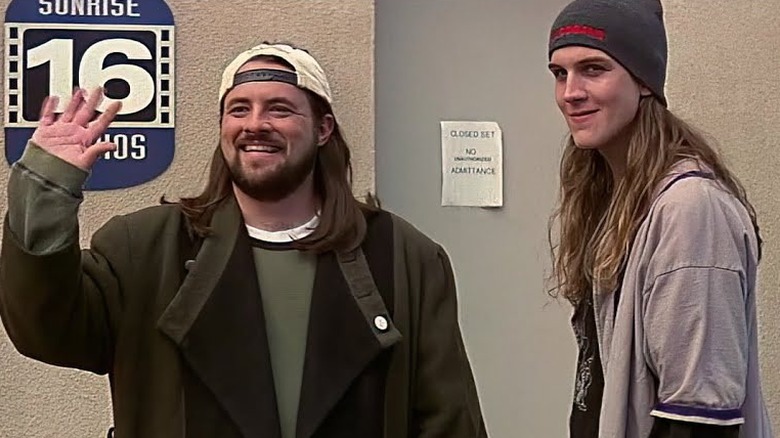
Even though we typically exclude fictional movie worlds from ones that originated as parody, we’re making an exception for “Scream” because, although it’s often referred to as a satire of the horror genre, it’s actually more accurately described as a dark comedy with a self-aware element. Here’s a lesser-known crossover you might have missed: Jay and Silent Bob making an appearance in “Scream 3.
In the third installment of the 2000 film series, things get quite intriguing as the movie delves into a level of self-reference. The storyline visits the set of a fictional movie called “Stab 3,” which is itself the third part of a trilogy inspired by the murders from the initial “Scream” film. Filmed in Hollywood, “Scream 3” offers viewers some unexpected guest appearances, such as Carrie Fisher and Roger Corman appearing as themselves. However, Jason Mewes and Kevin Smith appear on set not as themselves, but as their characters Jay and Silent Bob from the movie “Clerks.
Initially, it might appear unusual, but surprisingly enough, the two characters appeared together again only a year later as the main stars in the film titled “Jay and Silent Bob Strike Back!”. This time, they journeyed back to Hollywood seeking retribution when a movie studio tried to produce a film based on their fictional comic book character, “Bluntman and Chronic”, which was inspired by their likenesses.
Luther and The X-Files movies (and A Very Brady Sequel)
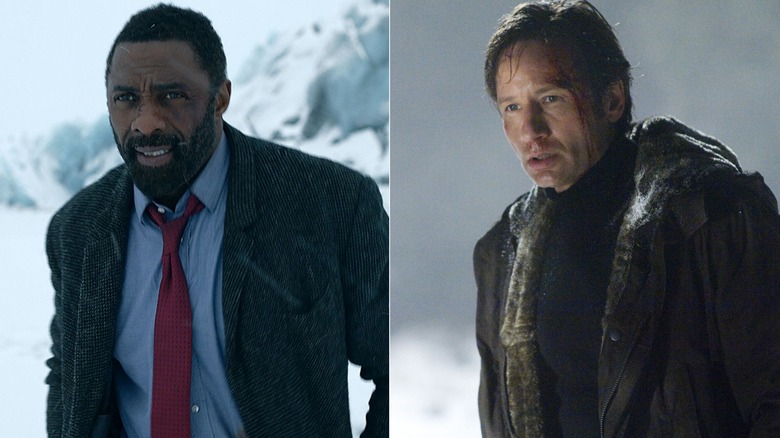
In a slightly unconventional comparison, let’s note that while “Luther” and “The X-Files” are primarily television shows, they have also ventured into movies. However, what makes their connection intriguing is that they belong to a less celebrated group in the Richard Belzer universe.
For quite some time, I’ve been the one portraying Detective John Munch on television, most notably in crime series like “Homicide: Life on the Street” and “Law & Order: Special Victims Unit.” However, my appearances aren’t limited to these shows; you might recognize me from other popular programs such as “The Wire,” “Arrested Development,” or even in animated roles on “The Simpsons” and “Sesame Street.
As a devoted fan, I might say: Although he doesn’t physically appear in the movie “Luther: The Fallen Sun,” the character of Munch is mentioned in an episode of the series as a New York associate of Idris Elba’s gritty British detective. However, John Belushi played Munch on-screen in “The Unusual Suspects,” an episode of “The X-Files” from 1997 that saw Mulder (David Duchovny) and Scully (Gillian Anderson) traveling to Baltimore, where Munch was interrogating a witness before his move to New York. The most intriguing link of all is “A Very Brady Sequel,” in which Munch, in a humorous turn, appears to investigate Carol’s (Shelley Long) first husband Roy (Tim Matheson).
Read More
- Gold Rate Forecast
- Silver Rate Forecast
- Honor of Kings returns for the 2025 Esports World Cup with a whopping $3 million prize pool
- PUBG Mobile heads back to Riyadh for EWC 2025
- USD CNY PREDICTION
- Kanye “Ye” West Struggles Through Chaotic, Rain-Soaked Shanghai Concert
- Arknights celebrates fifth anniversary in style with new limited-time event
- Hero Tale best builds – One for melee, one for ranged characters
- Every Upcoming Zac Efron Movie And TV Show
- Grimguard Tactics tier list – Ranking the main classes
2025-05-05 23:34